 January 19, 2017 John E. Ross, KD8IDJ, Editor
| |||||||||||
New "Amateur Radio Parity Act" Bill Introduced in US House of Representatives H.R. 555 -- a new "Amateur Radio Parity Act" bill -- has been introduced in the U.S. House of Representatives. The bill's language is identical to that of the 2015 measure, H.R. 1301, which passed in the House late last summer but failed to gain the necessary support in the waning days of the US Senate.
"Rep. Kinzinger has again stepped forward to introduce this important legislation," said ARRL CEO Tom Gallagher, NY2RF. "His commitment stems from exposure to what the Amateur Radio community brings to the service of all communities. ARRL and radio amateurs nationwide owe Rep. Kinzinger a resounding 'Thank You!' for his efforts on their behalf." H.R. 555 calls on the FCC to establish rules prohibiting the application of deed restrictions that preclude Amateur Radio communications on their face or as applied. Deed restrictions would have to impose the minimum practicable restriction on Amateur Radio communications to accomplish the lawful purposes of homeowners associations seeking to enforce the restriction. ARRL Asks FCC to Allocate New 5 MHz Band, Retain Channels and Current Power Limit ARRL has asked the FCC to allocate a new, secondary contiguous band at 5 MHz to the Amateur Service, while also retaining four of the current five 60-meter channels and current operating rules, including the 100 W PEP effective radiated power (ERP) limit. The federal government is the primary user of the 5 MHz spectrum. The proposed action would implement a portion of the Final Acts of World Radiocommunication Conference 2015 (WRC-15) that provided for a secondary international allocation of 5,351.5 to 5,366.5 kHz to the Amateur Service; that band includes 5,358.5 kHz, one of the existing 5 MHz channels in the US.
The League said that 14 years of Amateur Radio experience using the five discrete 5 MHz channels have shown that hams can get along well with primary users at 5 MHz, while complying with the regulations established for their use. In recent years, Amateur Radio has cooperated with federal users such as FEMA in conducting communication interoperability exercises. "While the Amateur Radio community is grateful to the Commission and to NTIA for the accommodation over the past 14 years of some access to the 5-MHz band, the five channels are, simply stated, completely inadequate to accommodate the emergency preparedness needs of the Amateur Service in this HF frequency range," ARRL said, adding that the five 2.8-kHz wide channels "have not provided sufficient capacity to enable competent emergency preparedness and disaster relief capability." Access even to the tiny 15-kHz wide band adopted at WRC-15 would "radically improve the current, very limited capacity of the Amateur Service in the United States to address emergencies and disaster relief," ARRL said.
"For precisely the same reasons that the Commission consented to a power increase on the five channels as recently as 2011 [from 50 W PEP ERP to 100 W PEP ERP], the Commission should permit a power level of 100 W PEP ERP, assuming use of a 0 dBd gain antenna, in the contiguous 60-meter band," ARRL said. ARRL pointed out that the ITU Radio Regulations permit assignments that are at variance with the International Table of Allocations, provided a non-interference condition is attached. The FCC will not invite comments on the League's Petition until it puts it on public notice and assigns a Rule Making (RM) number. Read more. ARRL Board of Directors to Meet in Connecticut The ARRL Board of Directors will convene January 20-21 in Windsor, Connecticut. The full Board gathering will be preceded by new Director and Vice Director orientation and meetings of the Programs and Services and Administration and Finance committees.
In addition to discussing a wide range of FCC and regulatory issues, the Board will vote on the 2017 financial plan, elect members to the Executive Committee and to the ARRL Foundation Board of Directors, and designate new committee assignments. Second Vice President Brian Mileshosky, N5ZGT, will report on a study addressing revitalization of the Official Observers program. The Board also will hear a report from the Entry Level License Committee, chaired New England Division Director Tom Frenaye, K1KI. Radio Amateurs of Canada President Glenn MacDonell, VE3XRA, and International Amateur Radio Union President Tim Ellam, VE6SH/G4HUA, will attend as guests of the Board. Hamvention Ready to Deal with Anticipated Traffic Flow at New Venue Hamvention® is ready to deal with the anticipated heavy traffic flow when the event opens on May 19 at its new location, the Greene County Fairgrounds and Expo Center in Xenia, Ohio. Mike Kalter, W8CI, said the all-volunteer Hamvention organizers have turned to professionals to address this aspect of the event. Kalter, who is treasurer of the sponsoring Dayton Amateur Radio Association (DARA), was interviewed last week by DX Engineering's Tim Duffy, K3LR.
"We recognized that we needed to reach out to a professional engineering firm that does this all over the country to help us to work with the local government officials, so that we can have a good solid plan to keep the people flowing in," Kalter told Duffy. Kalter said arrangements have been made to have staging areas for those needing to either offload or load equipment from the indoor exhibit areas or the flea market. He also pointed out that on-site parking would be free, and that no one will have to park in the mud. Kalter said areas set aside for parking are well drained, and he doesn't anticipate any problems, even if it rains during Hamvention. That goes for the flea market area as well, he said, noting that the arena infield area is used for events in good and bad weather alike. Kalter said Hamvention expects to be able to post the plan for flea market spaces on its website soon. The layout for indoor vendor and exhibitor booths is already available on the Hamvention website. Kalter said that if everyone who attended Hamvention 2016 at Hara Arena shows up again this year, they will find plenty of room at the new venue. Maps are available on the website. Turning to traffic of a different sort, Kalter noted that Greene County has brought in a high-speed Internet "pipe" to the new venue, and that AT&T will drop telephone lines wherever they're needed.
Kalter said there will be plenty of picnic tables as well as a temporary structure dedicated for socializing. He also promised that Hamvention 2017 will offer "a wide variety of great things to eat." That will include food vendors and food trucks. Kalter said it takes some 600 volunteers to make Hamvention happen each year, and the leadership team consists of 86 individuals. Reflecting its new venue, "Hamvention -- Same Friends, New Home" will be the theme for the 2017 event. Last summer's closure of Hara Arena forced the move to the new location more than 20 miles to the southeast. The price of admission to Hamvention has gone up slightly; tickets will now cost $22 for all 3 days ($27 at the door). Accompanied minors age 12 or younger may attend free. Online ordering is not yet available, but those planning to attend can order tickets by mail. Hamvention, which runs from Friday, May 19, until Sunday, May 21, is expected to attract upward of 25,000 people to the greater Dayton area. Visit the Hamvention website or e-mail for more information. Hams Upset as New Hotel Owner Wants Repeaters Removed from Roof A controversy has erupted on New York's Long Island, where the owner of the Islandia Marriott -- soon to become a casino -- wants two Amateur Radio repeaters and antennas removed from the roof of the hotel that's been their home for nearly 30 years. Town of Babylon ARES Emergency Coordinator and RACES Radio Officer John Melfi, W2HCB, said removing the repeaters would severely hamper the ability of Long Island radio amateurs to support communication in the event of a disaster or emergency.
"People don't understand what these [repeaters] mean to the community," Melfi told ARRL. An ARRL Hudson Division Assistant Director, Melfi is also the president of the Great South Bay Amateur Radio Club (GSBARC), and club members pressed the two repeaters into service a year ago after a major snowstorm shut down Greater New York City. The club said removing them will be a "devastating blow" to Amateur Radio emergency communications. The WR2UHF repeater is part of the Internet Radio Linking Project (IRLP), Melfi said, while WD2NY is a D-STAR machine. Owned by Preston Waterman, W2PW, both are affiliated with GSBARC. Melfi said that Waterman had an agreement in place with the hotel to use the site. The hotel's new owner, Delaware North, has expressed concerns about safety and security at the casino and said it wants the equipment off the hotel roof sooner rather than later.
Melfi said it would be "almost impossible" to find another comparable location, and that, in any event, relocating the repeaters would prove costly and difficult. The equipment is expected to be moved in February, but the club has begun an online petition drive that has already collected some 350 signatures. Melfi told ARRL that he's hoping that the GSBARC and Delaware North will be able to reach a formal memorandum of understanding that spells out access guidelines, so the repeaters and antenna can remain in place atop the soon-to-be casino. In a statement, Delaware North told Long Island News 12, "We are not aware of any agreement that the previous hotel owner had in place to allow the antenna to be housed on the property, and we will no longer permit the use of the equipment or access to the roof. The area needs to be secure due to safety and security concerns, so we have taken steps to limit access. We asked the leader of the Amateur Radio group who approached us to find another location for the antenna, and we offered our assistance in moving the equipment." The Doctor Will See You Now! "Meteor Scatter" is the topic of the latest (January 12) episode of the "ARRL The Doctor is In" podcast. Listen...and learn!
Every 2 weeks, your host, QST Editor-in-Chief Steve Ford, WB8IMY, and the Doctor himself, Joel Hallas, W1ZR, will discuss a broad range of technical topics. You can also e-mail your questions to doctor@arrl.org, and the Doctor may answer them in a future podcast. Enjoy "ARRL The Doctor is In" on Apple iTunes, or by using your iPhone or iPad podcast app (just search for "ARRL The Doctor is In"). You can also listen online at Blubrry, or at Stitcher (free registration required, or browse the site as a guest) and through the free Stitcher app for iOS, Kindle, or Android devices. If you've never listened to a podcast before, download our beginner's guide. Just ahead: "AM and SSB." ARRL Reintroduces a Popular Classic -- Experimental Methods in RF Design ARRL has reintroduced the popular title Experimental Methods in RF Design as a classic reprint edition. Immerse yourself in the communications experience. Build equipment while understanding basic concepts and circuits.
Experimental Methods in RF Design classic reprint edition is available from the ARRL Store or your ARRL Dealer (ARRL Item no. 0574), ISBN: 978-8-87259-9239-9, $49.95 retail. Contact ARRL Publication Sales or call 860-594-0355 (toll-free in the US, 888-277-5289). This classic reprint ddition of a previous ARRL publication contains dated content and references that may no longer be relevant or valid. Software referenced throughout the book is not included and not available. Maxim Memorial Station W1AW Receives Equipment Donations
Maxim Memorial Station W1AW has received equipment donations from Heil Sound and Radiohaus/America. Heil Sound recently gave W1AW a Gold Grill PR781G Studio Microphone, a PR40 Gold microphone, two PRO7-DY headsets (pink and red), a Pro Set Elite 6 headset with HC6 element, three FS-3 single footswitches, two "topless" mic booms, and replacement Pro Set Plus cords and PS3 cables.
W1AW Manager Joe Carcia said most of the gear will repair or replace items at the station that have seen a lot of visitor use over the years. W1AW has also received a "Callsight" lighted call sign display from Erwin Hübsch Neto, PY2QI/KK4CGD, at Radiohaus/America in Brazil. A remote control allows the user to change the display color as well as choose flashing or strobe display mode. "We're extremely grateful to Bob Heil and Erwin Neto for their generous donations," Carcia said. Nebraska Sesquicentennial Celebration QSO Party Set for February, March Radio amateurs in Nebraska will celebrate the state's 150th anniversary during the Sesquicentennial Anniversary Celebration Week QSO Party, starting on Saturday, February 25, and continuing until Sunday, March 6. That time period includes the actual anniversary date, March 1.
A special QSL card will be available with a self-addressed, stamped envelope and QSL to the Nebraska station contacted. Contact ARRL Midwest Division Vice Director Art Zygielbaum, K0AIZ, or ARRL Nebraska Section Manager Matt Anderson, KB0BOJ, for additional information. The Nebraska Sesquicentennial Amateur Radio Commemorative QSO Party is an official Nebraska Sesquicentennial event sanctioned by the Nebraska Sesquicentennial Commission. German Regulator Acts on More than 6,000 Instances of Radio Interference in 2016 German telecoms regulator the Federal Network Agency (Bundesnetzagentur -- BNetzA) reports that it investigated and resolved more than 6,000 cases of radio interference in 2016. The agency reported that the caseload was about the same as 2015's.
The agency noted that the causes of radio interference have changed significantly in recent years, but incidents of interference are continuing to decline overall. New and innovative wireless applications in particular make it difficult to isolate and eliminate the causes of interference, it said.
Interference to safety-related radio services -- such as rescue services, fire departments, and law enforcement -- or to aircraft radio systems present a public danger, the agency continued. The Federal Network Agency has deployed specialists and specialized equipment at 19 locations around Germany, giving the agency round-the-clock ability to detect radio interference. The agency advises and clarifies in each instance whether an interference case can be handled on site and if a fee must be assessed. In addition to handling radio interference, the Test and Measurement Service oversees spectrum usage and maintains electromagnetic compatibility limits, among other functions. -- Thanks to Deutscher Amateur Radio Club (DARC) Ulrich Rohde, N1UL, Recognized for Pioneering Work on SDR Ulrich L. Rohde, N1UL, of Synergy Microwave Corp was invited to deliver the sixth Sir J.C. Bose Memorial Lecture at the IEEE Hyderabad Section on December 2 during a joint session of the IEEE MTT, AP, and EMC Societies in Hyderabad, India. Rohde's talk was "Next Generation Networks: Software Defined Radio -- Emerging Trends." (Click here to view a collection of slides used in the lecture.)
While working under a US Department of Defense contract at RCA in 1982, Rohde's department developed the first SDR, which used the COSMAC (Complementary Symmetry Monolithic Array Computer) chip. Introduced by RCA in early 1976, the RCA CDP1802 eight-bit CMOS microprocessor -- a 40-pin LSI integrated circuit chip -- was the company's first single-chip microprocessor. Rohde was among the first to present publicly on this topic with his February 1984 talk, "Digital HF Radio: A Sampling of Techniques," at the Third International Conference on HF Communication Systems and Techniques in London. The Hyderabad lecture's namesake, Sir Jagadish Chandra Bose, was a Bengali scientist who lived in British India in the late 19th and early 20th centuries and was an expert in math, physics, biology, and archaeology. Bose pioneered the investigation of radio and microwave optics, contributed significantly to plant science, and laid the foundations of experimental science. Much of Bose's original scientific work was in the area of microwaves. He produced extremely short radio waves and was the first to use a semiconductor junction to detect radio waves. Bose's research on the response of tissues to microwaves and other stimuli led to many significant findings in that field, and the IEEE named him one of the fathers of radio science. -- Thanks to Microwave Journal Harry K. Wolf, W6NKT, SK at 107; May Have Been World's Oldest Active Radio Amateur Harry K. Wolf, W6NKT, of Morro Bay, California, has died just a couple of weeks short of his 108th birthday. Wolf may have been the oldest active radio amateur in the US, if not in the world, although no official records are maintained. Licensed since 1936, Wolf was an ARRL member and a Life Member of the Quarter Century Wireless Association (QCWA). Wolf was on the air daily, mostly on 40-meter CW.
Born in Paso Robles, California, Wolf said in his QRZ.com profile that he built his first radio as a young teenager in 1922. He got his ham ticket while living in Arizona, and held the call sign W6NKT for his entire life. While serving in the US Navy during World War II, Wolf taught navigation to cadets in San Luis Obispo, California. Later, he served for 31 years as a professor of electronics engineering at two University of California campuses, retiring in 1973. Wolf was the founding advisor of the Cal Poly Amateur Radio Club and signed the club's original charter in 1947; in 2009, he donated a Yaesu FTDX-9000D transceiver to the club. After retiring, Wolf went to Hong Kong Polytechnic for 4 years and operated as VS6GF. His nephew, Tim Bryan, said his uncle also taught in Tanzania. After returning to the US, he lived in Florida until 1994, when he returned to Morro Bay. Bryan told ARRL that his uncle was raised on a ranch in the Geneseo area and was once known as the fastest grain sack sewer in San Luis Obispo County, demonstrating the by-then lost art into his hundreds. Neal Swanberg, KG6AYI, who is secretary of the Estero Radio Club, said Wolf last checked into the county net in late November. "We will all miss Harry's bright smile and good humor," he said. A memorial service is set for Saturday, January 28, at the Morro Bay Golf Course. -- Thanks to Tim Bryan, Neal Swanberg, KG6AYI, and Marcel Stieber, AI6MS In Brief...
The K7RA Solar Update Tad Cook, K7RA, Seattle, reports: Last week featured zero sunspots for the entire 7 days. This week (January 12-18) the average daily sunspot number rose to 22.6. The average daily solar flux went up as well -- from 72.5 to 77.1, while the average planetary A index declined from 14.3 to 6.
Predicted planetary A index is 20 on January 19; 18 on January 20-22; 12 on January 23; 5 on January 24-26; 12, 15, 7, 10, 12 on January 27-31; 16, 18, 20, 16, 12, 10, and 8 on February 1-7; 5 on February 8-12; 8, 22, and 18 on February 13-15, and 16 on February 16-18. Sunspot numbers for January 12 through 18 were 11, 24, 25, 23, 24, 26, and 25, with a mean of 22.6. The 10.7-centimeter flux was 75.5, 74.9, 76.6, 77.5, 78.3, 78.6, and 78.6, with a mean of 77.1. Estimated planetary A indices were 5, 4, 4, 5, 3, 4, and 17, with a mean of 6. Estimated mid-latitude A indices were 3, 3, 3, 2, 2, 3, and 11, with a mean of 3.9. Send me your reports or observations.
. . . . . .
Just Ahead in Radiosport
See the ARRL Contest Calendar for more information. For in-depth reporting on Amateur Radio contesting, subscribe to The ARRL Contest Update via your ARRL member profile e-mail preferences. Upcoming ARRL Section, State, and Division Conventions
Find conventions and hamfests in your area.
. .
Subscribe to...
Free of charge to ARRL members...
| |||||||||||
%20Logo.jpg) As with H.R. 1301, the new measure introduced on January 13 in the 115th Congress was sponsored by Rep. Adam Kinzinger (R-IL), with initial co-sponsorship by Rep. Joe Courtney (D-CT) and Rep. Greg Walden, W7EQI (R-OR). Walden now chairs the House Committee on Energy and Commerce, to which the new bill has been referred. H.R. 555 will get an initial airing in the Subcommittee on Communications and Technology. When H.R. 1301 came up in committee, Walden spoke forcefully in favor of the measure, which ultimately attracted 126 House cosponsors.
As with H.R. 1301, the new measure introduced on January 13 in the 115th Congress was sponsored by Rep. Adam Kinzinger (R-IL), with initial co-sponsorship by Rep. Joe Courtney (D-CT) and Rep. Greg Walden, W7EQI (R-OR). Walden now chairs the House Committee on Energy and Commerce, to which the new bill has been referred. H.R. 555 will get an initial airing in the Subcommittee on Communications and Technology. When H.R. 1301 came up in committee, Walden spoke forcefully in favor of the measure, which ultimately attracted 126 House cosponsors..jpg)
 "Such implementation will allow radio amateurs engaged in emergency and disaster relief communications, and especially those between the United States and the Caribbean basin, to more reliably, more flexibly, and more capably conduct those communications [and preparedness exercises], before the next hurricane season in the summer of 2017," ARRL said in a January 12
"Such implementation will allow radio amateurs engaged in emergency and disaster relief communications, and especially those between the United States and the Caribbean basin, to more reliably, more flexibly, and more capably conduct those communications [and preparedness exercises], before the next hurricane season in the summer of 2017," ARRL said in a January 12 (2).jpg) In its Petition, ARRL also called upon the FCC to retain the same service rules now governing the five channels for the new band. The WRC-15 Final Acts stipulated a power limit of 15 W effective isotropic radiated power (EIRP), which the League said "completely defeats the entire premise for the allocation in the first place."
In its Petition, ARRL also called upon the FCC to retain the same service rules now governing the five channels for the new band. The WRC-15 Final Acts stipulated a power limit of 15 W effective isotropic radiated power (EIRP), which the League said "completely defeats the entire premise for the allocation in the first place."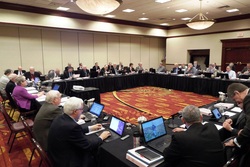 The prime topic on the agenda will be the new Amateur Radio Parity Act bill, H.R. 555, just introduced in the US House.
The prime topic on the agenda will be the new Amateur Radio Parity Act bill, H.R. 555, just introduced in the US House..JPG)
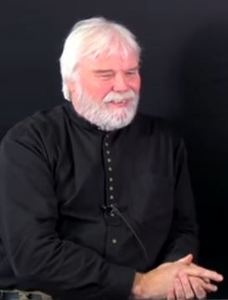
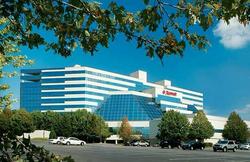
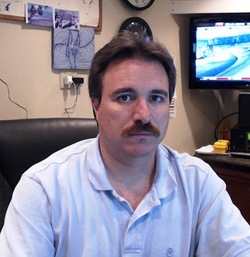
.jpg) Sponsored by
Sponsored by 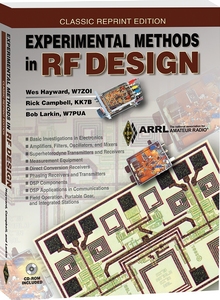 "This is a...classic, extremely good text on designing circuits for the ham," ARRL Life Member Bob DeVarney, W1ICW, a professional radio communication technician and avid experimenter said. "If you do any building at all and want to know the 'why' behind things, this is a very worthwhile addition to your bookshelf."
"This is a...classic, extremely good text on designing circuits for the ham," ARRL Life Member Bob DeVarney, W1ICW, a professional radio communication technician and avid experimenter said. "If you do any building at all and want to know the 'why' behind things, this is a very worthwhile addition to your bookshelf.".jpg)
.JPG)
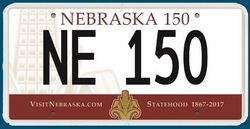 Nebraska radio amateurs may operate from their own stations or as part of Nebraska historical site activations, appending "/NE150" to their call signs. Nebraska stations transmit name, signal report, and Nebraska county (plus historical site, if appropriate). Non-Nebraska stations transmit name, signal report, and state, Canadian province, or DXCC entity.
Nebraska radio amateurs may operate from their own stations or as part of Nebraska historical site activations, appending "/NE150" to their call signs. Nebraska stations transmit name, signal report, and Nebraska county (plus historical site, if appropriate). Non-Nebraska stations transmit name, signal report, and state, Canadian province, or DXCC entity..png) "Our Testing and Measurement Service tracks down and determines the cause of radio interference and remedies them," explained Jochen Homann, president of the Federal Network Agency. "Ever more diverse wireless applications are increasing the complexity of investigating and resolving interference cases."
"Our Testing and Measurement Service tracks down and determines the cause of radio interference and remedies them," explained Jochen Homann, president of the Federal Network Agency. "Ever more diverse wireless applications are increasing the complexity of investigating and resolving interference cases."
.jpg)
.jpg)
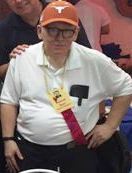 VHF Propagation Guru, DXer Patrick J. Dyer, WA5IYX, SK: VHF DXer and propagation expert Pat Dyer, WA5IYX, of San Antonio, Texas, died in mid-December. Licensed in 1963 and an ARRL member, he was 69. "Pat contributed greatly to our understanding of sporadic E propagation, through both his professional research at the Office of Telecommunications in Boulder, Colorado, and later through his personal observations," Les Rayburn, N1LF, said in a post to the VHF Contesting reflector. Dyer's research led to articles in both QEX and QST, and he delivered presentations at Central States VHF Society (
VHF Propagation Guru, DXer Patrick J. Dyer, WA5IYX, SK: VHF DXer and propagation expert Pat Dyer, WA5IYX, of San Antonio, Texas, died in mid-December. Licensed in 1963 and an ARRL member, he was 69. "Pat contributed greatly to our understanding of sporadic E propagation, through both his professional research at the Office of Telecommunications in Boulder, Colorado, and later through his personal observations," Les Rayburn, N1LF, said in a post to the VHF Contesting reflector. Dyer's research led to articles in both QEX and QST, and he delivered presentations at Central States VHF Society (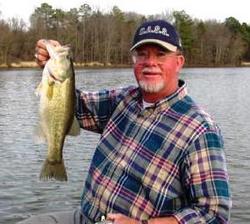 Huntsville Hamfest Association President Charles Emerson, N4OKL, SK:
Huntsville Hamfest Association President Charles Emerson, N4OKL, SK: 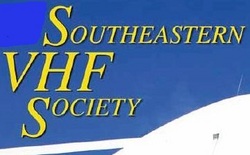 Southeastern VHF Society Issues Call for Papers: The Southeastern VHF Society (
Southeastern VHF Society Issues Call for Papers: The Southeastern VHF Society (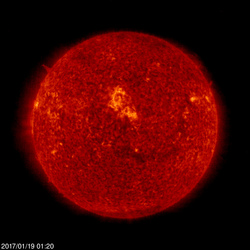 Predicted solar flux is 78 on January 19-22; 76, 75, 74, and 78 on January 23-26; 77 on January 27-February 1; 76 on February 2; 75 on February 3-8; 76 on February 9; 77 on February 10-14; 78 on February 15, and 80 on February 16-21.
Predicted solar flux is 78 on January 19-22; 76, 75, 74, and 78 on January 23-26; 77 on January 27-February 1; 76 on February 2; 75 on February 3-8; 76 on February 9; 77 on February 10-14; 78 on February 15, and 80 on February 16-21.








